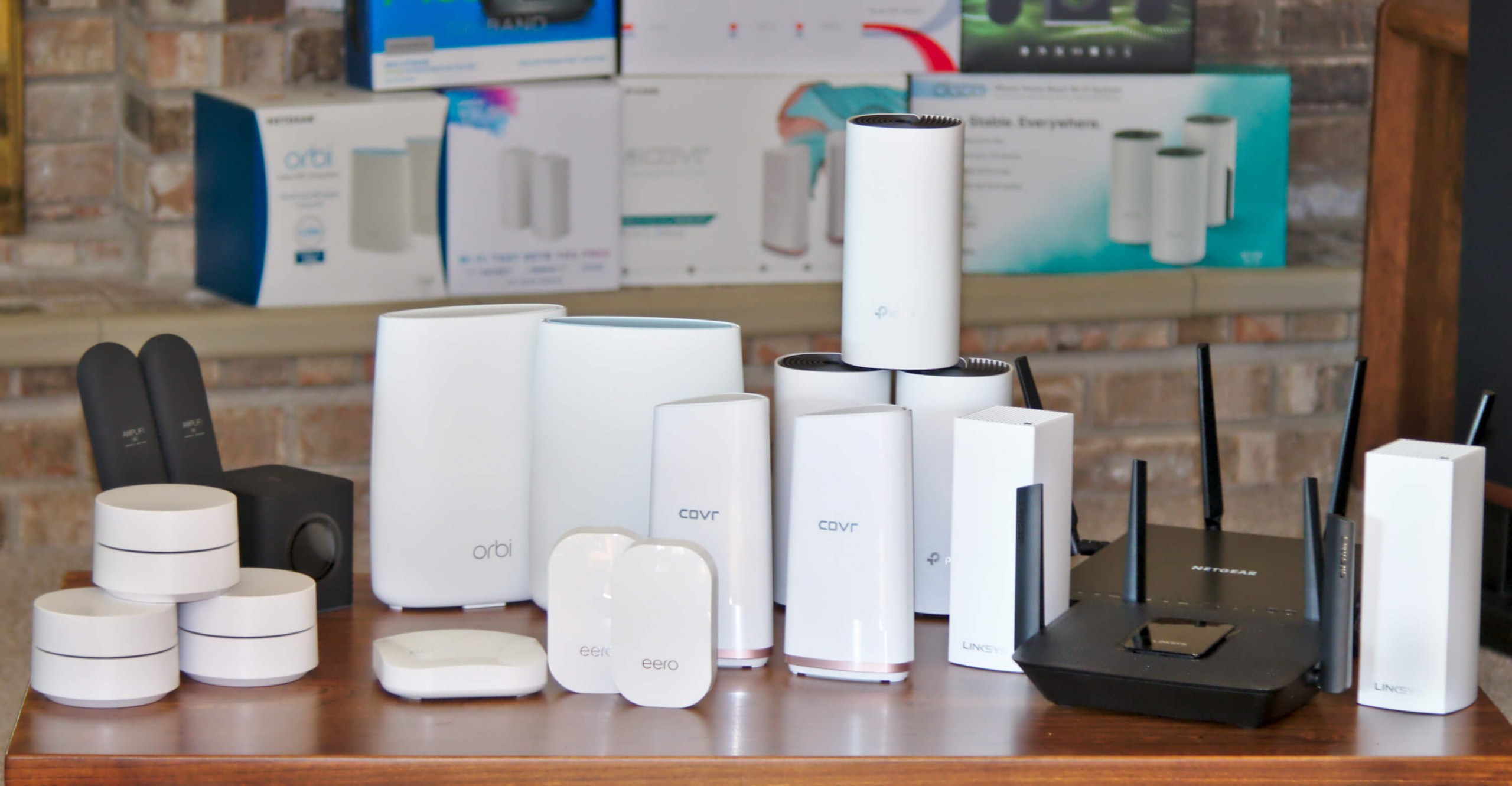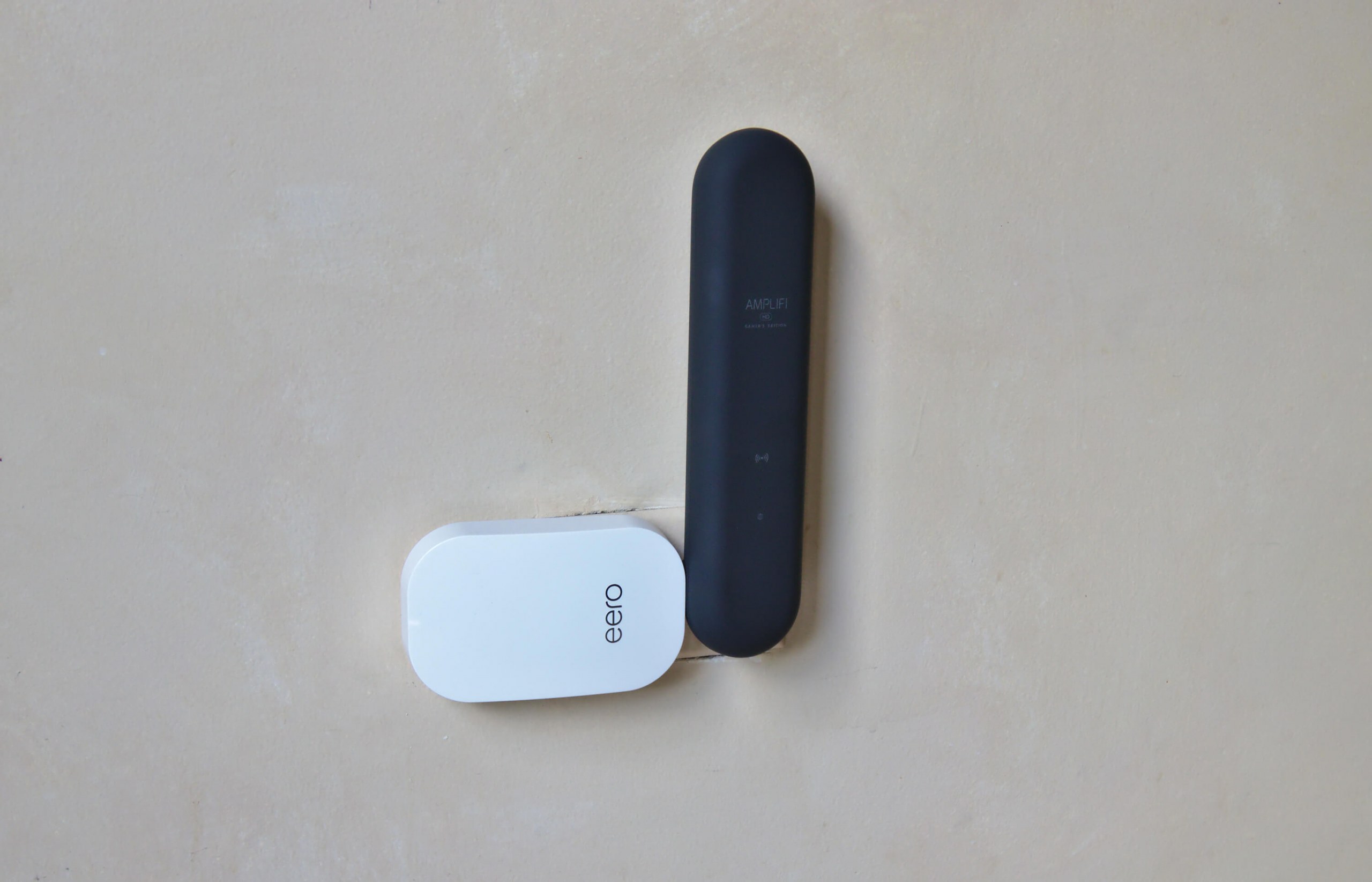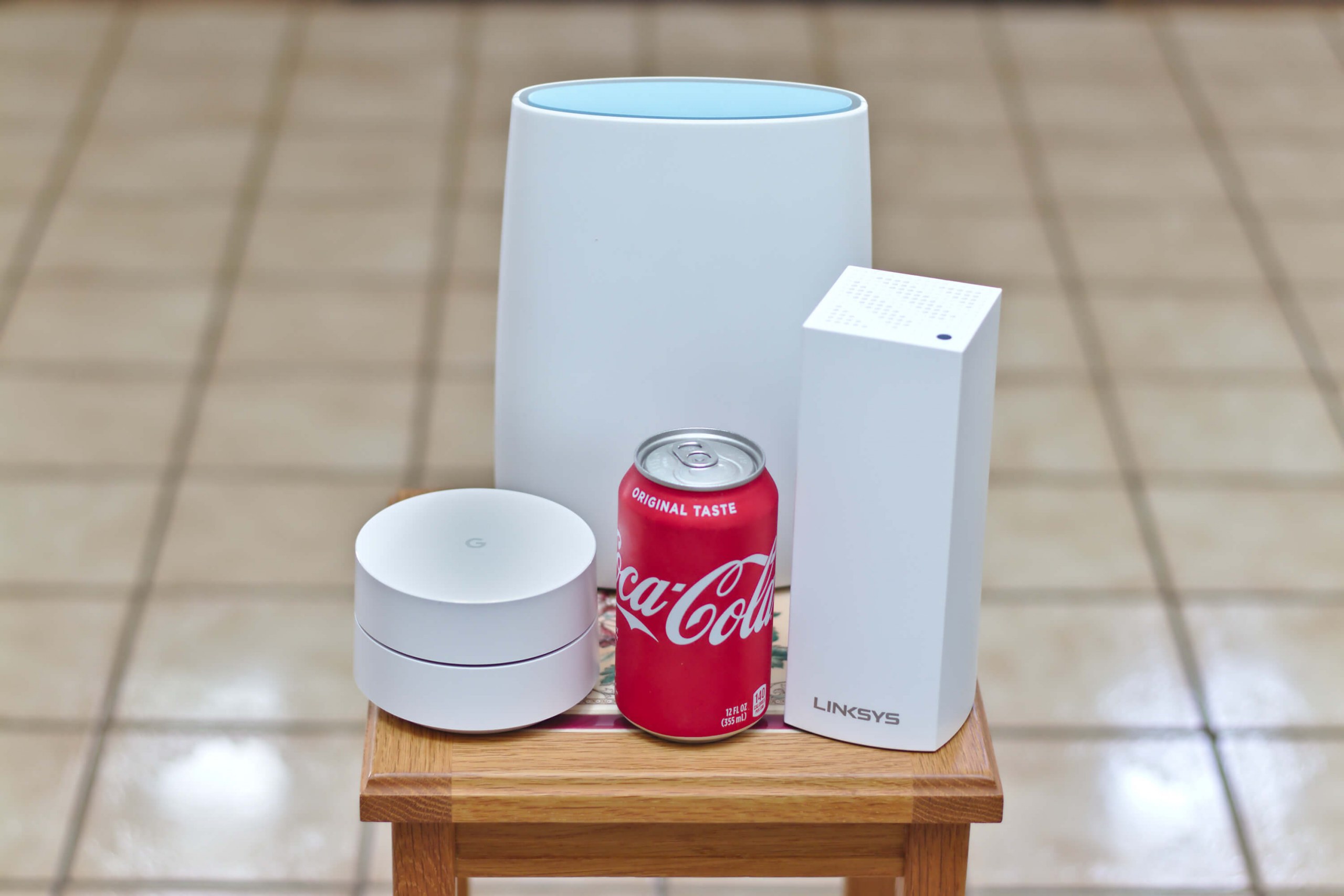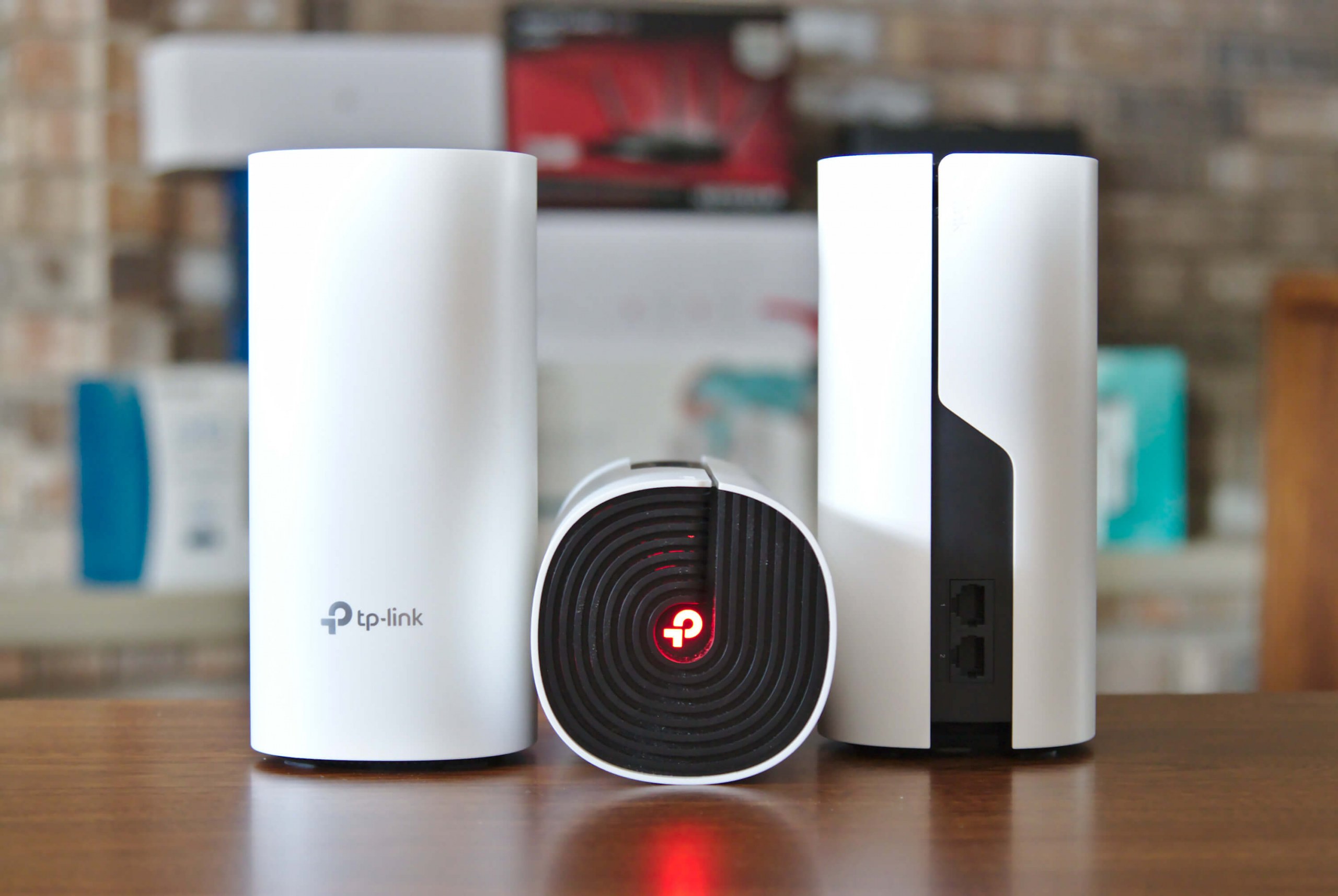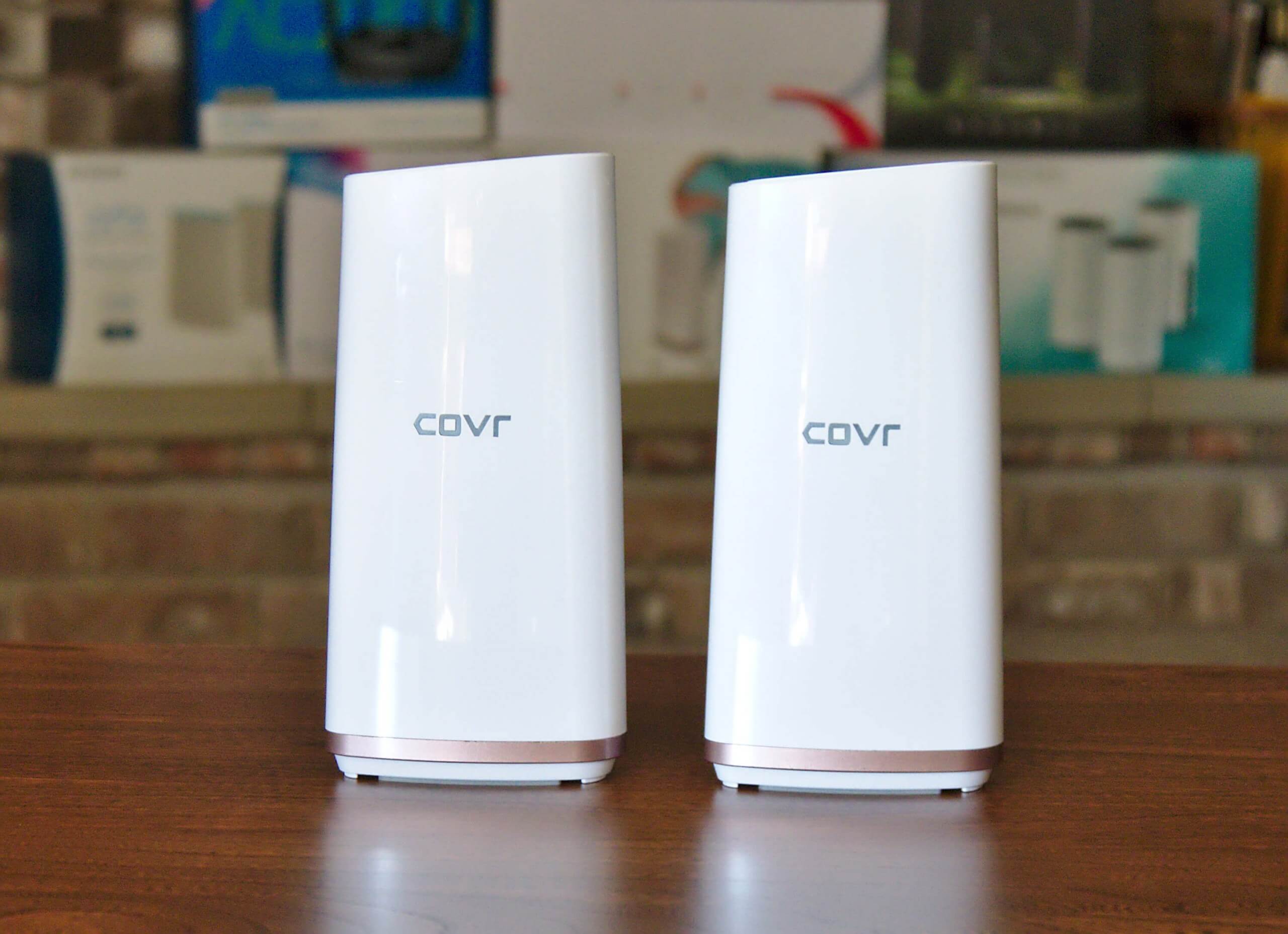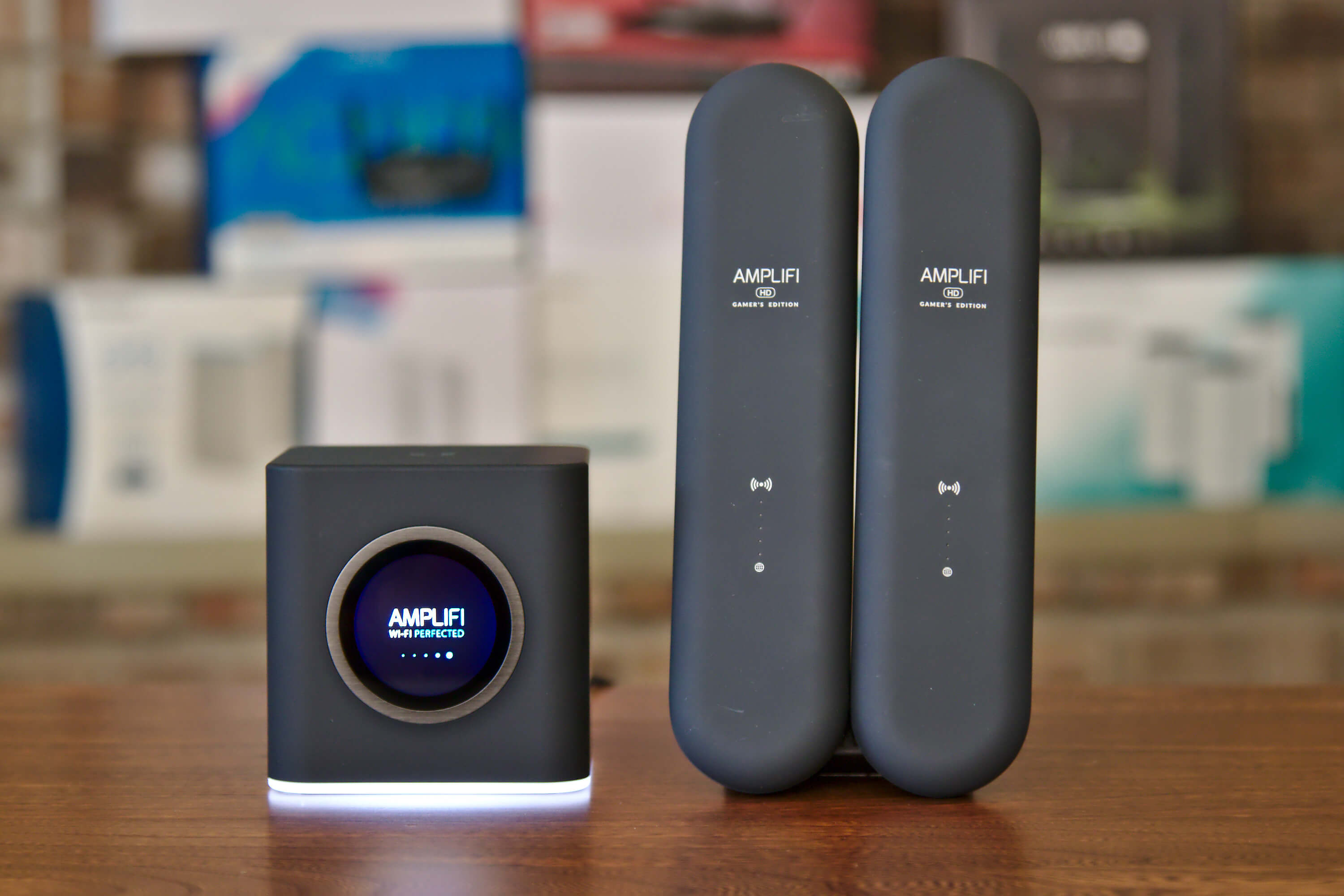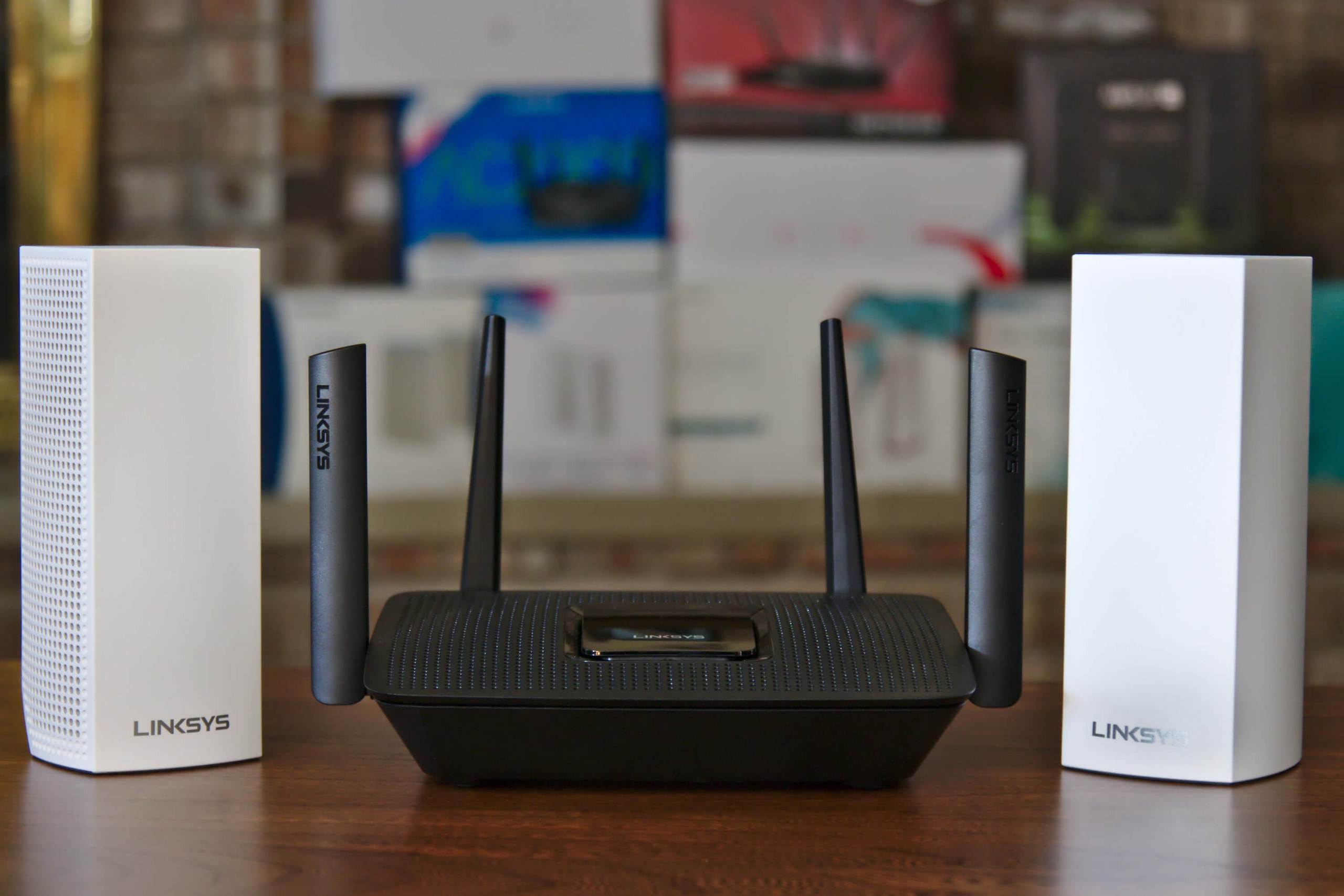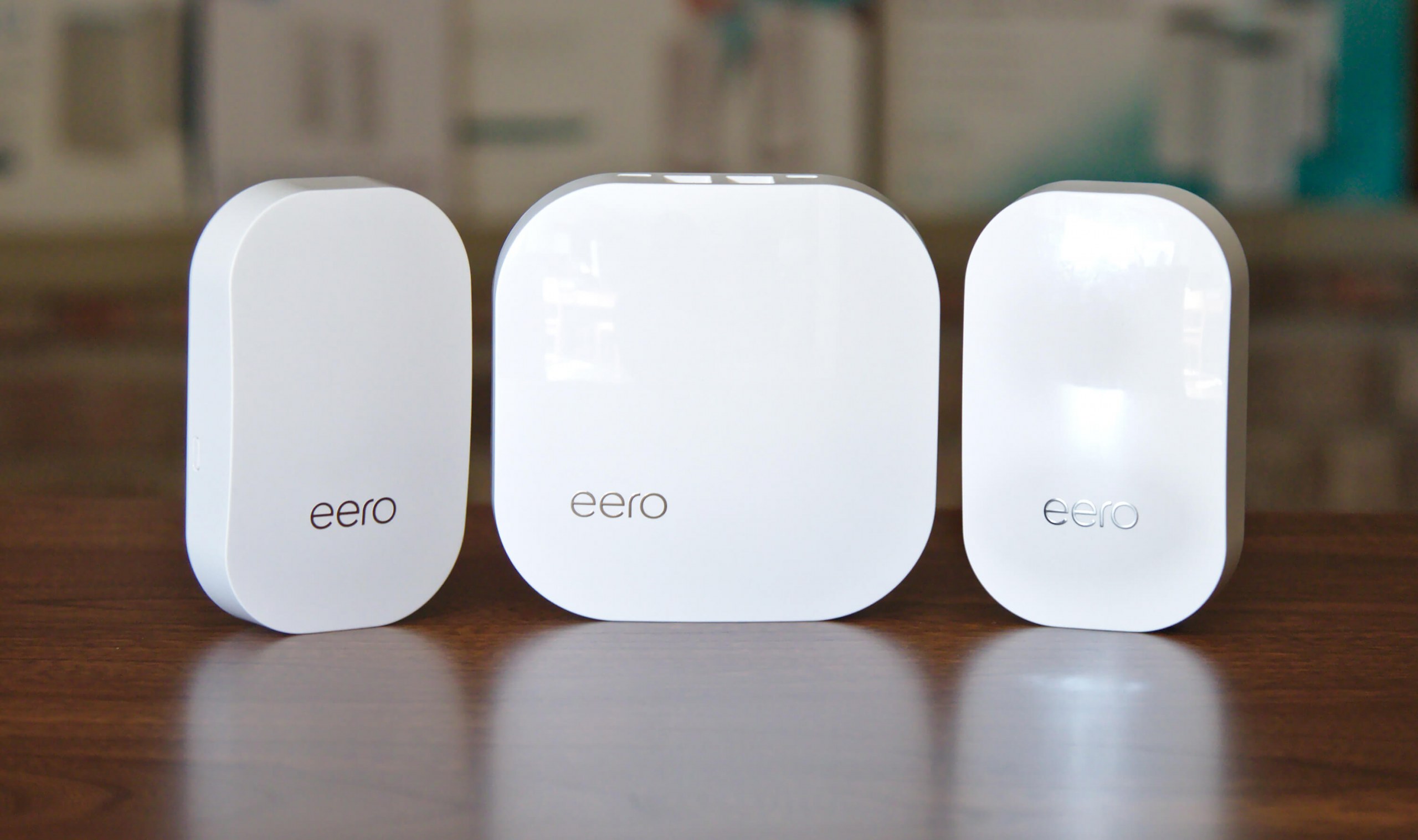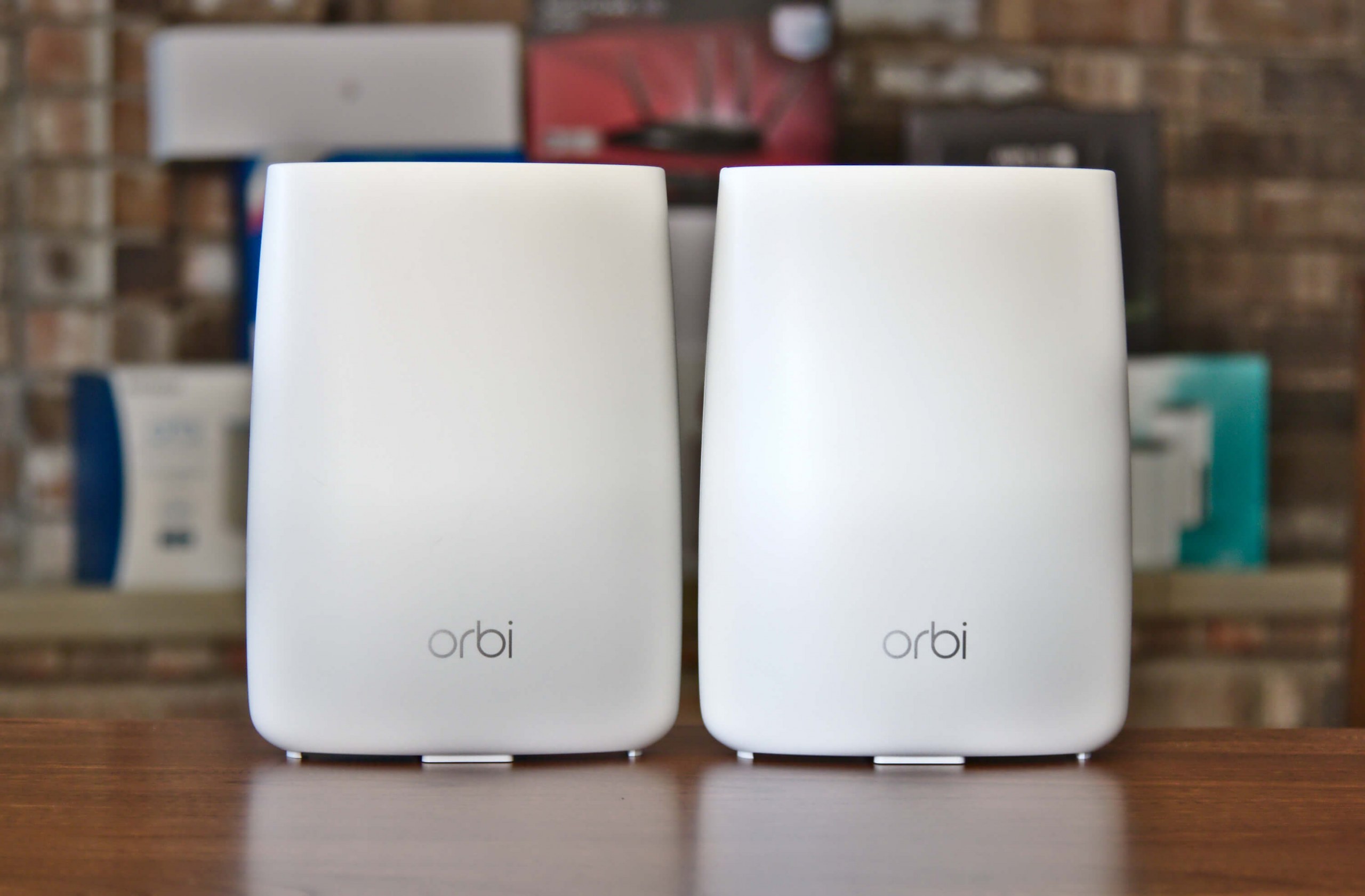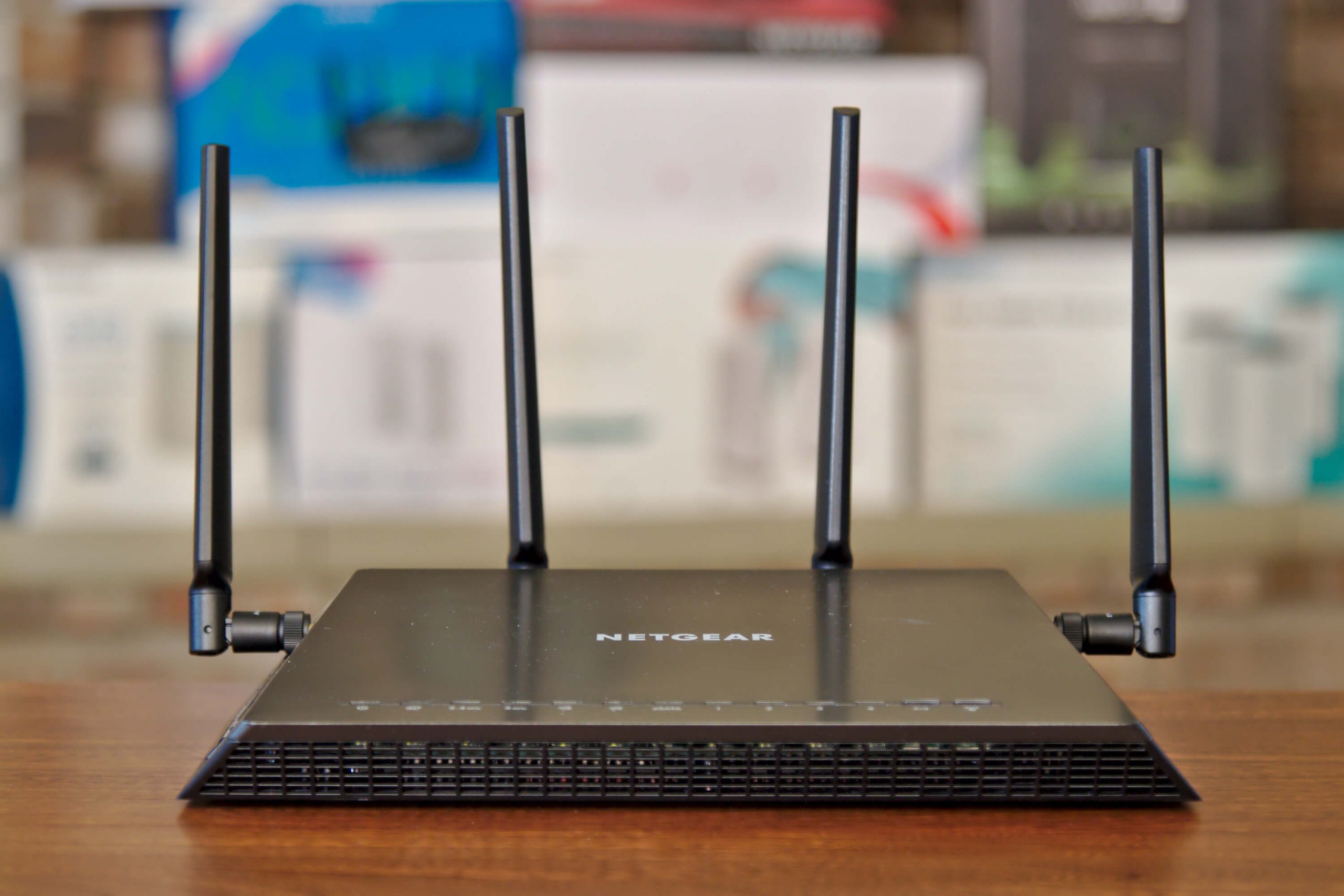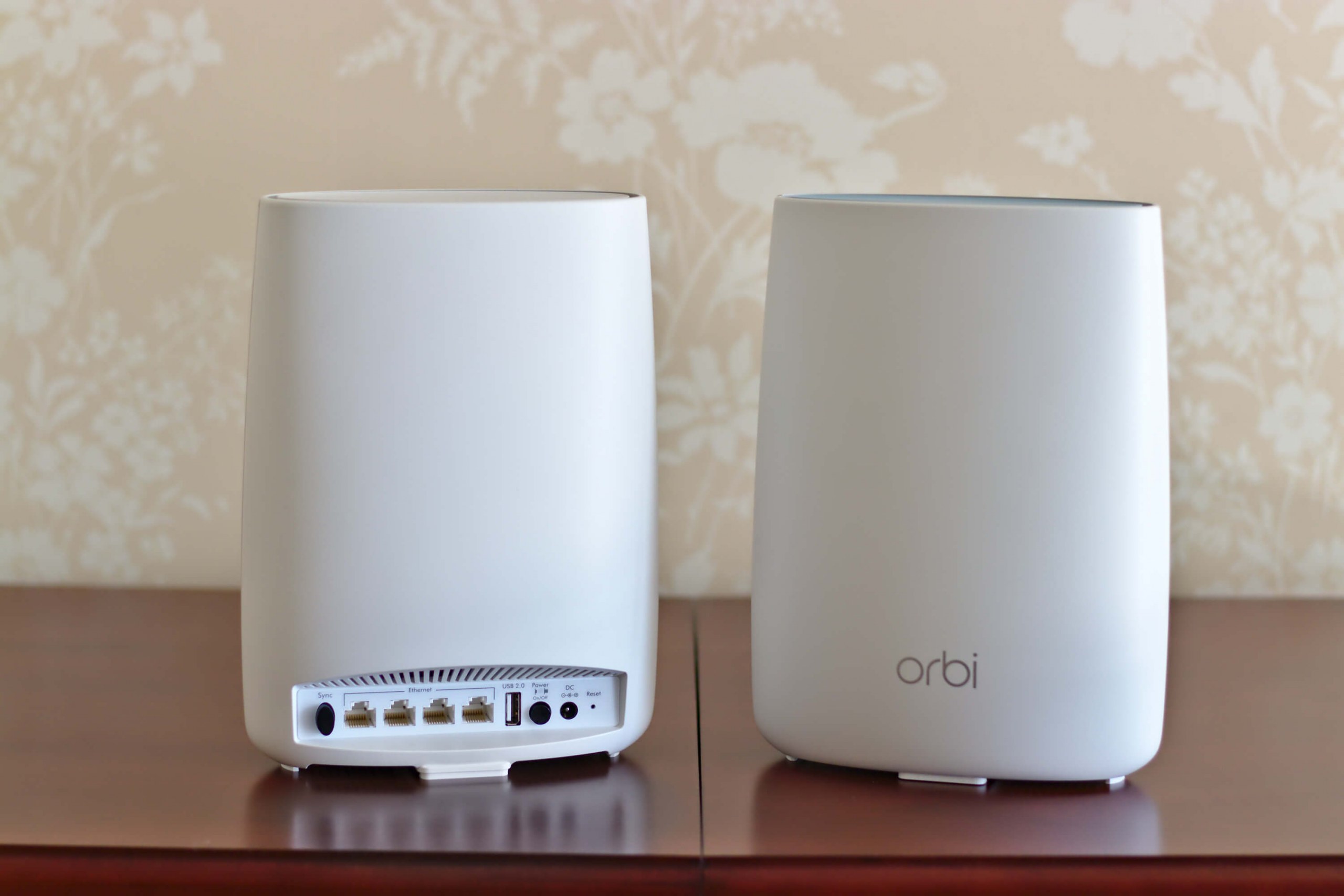Mesh Wi-Fi routers are a recent trend in the networking market and aim to bring some of the advanced features of enterprise networking systems to the consumer. How well do they work, and what performance benefit do you get by switching to one? We'll take a deep dive today into the top players on the market to find out.
Every wireless network can generally be classified according to three criteria: coverage, speed, and network usability. Traditional home Wi-Fi networks have done a reasonably fine job balancing those three areas, but always seem to be lacking. High performance systems often are difficult to setup and don't have the best range. Basic products are easy to setup, but leave a lot to be desired in terms of performance. For tech savvy users that want to get the most of their system, a common solution is to connect multiple networks together. This gives improved speed and coverage, but can be tricky to setup and manage. Modern mesh Wi-Fi systems are designed to hit all three of these areas.
A perfect Wi-Fi system would be one that you never have to think about. Setup should be simple and not require any advanced networking knowledge. It should cover your entire living space and be easy to upgrade for larger floorplans. This means no dead zones or coverage gaps. Lastly, it should offer solid performance across multiple devices with no buffering.
Before we get started, some words to put this into perspective: if you already have a Wi-Fi system that covers your entire living area and delivers consistently high speeds, a mesh system won't help you. If you have a slow internet connection from your ISP, a mesh system won't help you. Mesh systems typically offer lower peak performance than standalone high-end routers. This means that in smaller locations, a mesh system will usually perform worse than a single access point due to interference and lower-end hardware. Mesh systems are also about 2-3x the cost of a traditional home network so that must be taken into consideration as well.
Where a mesh system is designed to perform well is areas that are too big for a single access point. The most basic solution in this scenario has been to buy a cheap range extender, but as many can attest to, extenders rarely perform as well as you would expect. Standard range extenders usually work by creating a new network. This may show a good signal strength on your mobile device, but extenders tend to be slow and often bad at transmitting and receiving at the same time since they usually only contain a single antenna. This cuts your usable speed in half.
One common solution people think will work is to give their range extender's network the same name as their main network. This is what is done in enterprise settings where there may be hundreds of access points in a building all broadcasting the same network. Enterprise network hardware is designed to create seamless networks with no performance degradation during handoffs. Unfortunately, mobile devices often aren't smart enough to switch between the basic networks created by consumer range extenders. This means you end up having to manually switch between networks depending on what room you are in.
Enter the Mesh Wi-Fi System
Mesh Wi-Fi systems use a combination of lower power nodes with advanced handoff techniques to create that sought after seamless network. These networks are typically very simple to setup and manage at a high level. The nodes are constantly handing off traffic and adjusting their internal routing based on current network statistics. If someone turns on a microwave and blasts all over the 2.4GHz bands, the network may switch to mainly using the 5GHz band. This is all handled internally so there's no need to manually switch from "myNetwork_2.4" to "myNetwork_5.0" or "myNetwork_2.4_extended".
For newer phones with 5GHz 802.11ac chipsets, mesh networks can offer a substantial performance boost by extending the range of the 5GHz signal. The primary limitation with 2.4GHz networks is their speed while with 5GHz networks, it's their range. Even with the highest end router, the 5Ghz radio can only be so powerful under FCC rules. Adding several access points can help the fast 5Ghz band reach further.
Modern mesh networks can be split into two main classes depending on how the devices function together. Some systems consist of a powerful main node with additional, smaller mesh nodes. In other systems, the nodes are all identical and can be used anywhere in the network. One challenge in creating high performing networks is balancing the communications from node to user with the communications from node to node. The more nodes a network has, the more control messages and non-user data will need to be transmitted. Most of this is handled internally by the network. Node placement is simple and some systems can even help you out by telling you if any nodes are too close or too far.
Today's roundup has systems that fall into both camps as shown below, essentially the most popular systems from the likes of Netgear, Linksys, Ubiquiti, Google, and Amazon's Eero are included, among other competitors. Listed pricing may vary depending on sales and where you purchase.
| Product | Advertised Coverage Area (sq. ft.) | Wireless Link | Base Cost | Additional Extender Cost |
| TP-Link Deco M4 (3 pack) |
5,500 | Dual-Band / 1200Mbps | $180 | $50 |
| D-Link Covr-2202 (2 pack) |
6,000 | Tri-Band / 2200Mbps | $255 | $255 |
| Ubiquiti AmpliFi (2+1 pack) |
10,000 | Dual-Band / 1600Mbps | $340 | $120 |
| Linksys Velop AC4400 (2+1 pack) |
6,000 | Tri-Band / 2200Mbps | $480 | $130 |
| Amazon Eero (2+1 pack) |
3,500 | Tri-Band / 1440Mbps | $400 | $150 |
| Google Wi-Fi (3 pack) |
4,500 | Dual-Band / 1200Mbps | $240 | $100 |
| Netgear Orbi RBK50 (1+1 pack) |
5,000 | Tri-Band / 2200Mbps | $330 | $140 |
| Netgear Nighthawk X4S router |
2500 | Dual-Band / 2600Mbps | $199 | N/A |
Each manufacturer sells a wide variety of product across several budgets, but we have products from their mid to upper tiers. Most systems come as a complete pack of two or three units and are capable of adding more mesh points if required. For each unit, we'll go over setup, ease of use, and any other notable features. We'll cover performance and recommendations at the end.
TP-Link Deco M4
The first product we'll look at is the Deco line by TP-Link. We tested the Deco M4 which is one of a wide variety of products in the Deco ecosystem. No matter what products you buy, they are all compatible. One unique feature of TP-Link's Deco line is the potential integration with powerline networking through their P7 system. This can help further extend your network beyond Wi-Fi range.
The Deco M4 is a symmetric system with identical nodes throughout. These units are pretty big compared to most of the other systems we'll check out today and require an external power adapter.
They have limited connectivity with just two Ethernet jacks which may not be enough for some setups. In a common scenario, you will have the main connection to your modem, a laptop or desktop connection, entertainment/gaming devices, IoT hubs, printers and more. With two ports, you will almost certainly need to buy an additional network switch if you want more than one device to be hardwired. Thankfully, all the mesh nodes also have two ports so for lower bandwidth connections like printers or IoT devices, they can be plugged into other nodes.
When setting up the Deco, you can select between router or bridge mode. Router mode refers to a standard home network where you would plug one of the nodes into a modem. Bridge mode is for a network that already has a router but you want to add Wi-Fi capabilities. This would be most commonly used in a scenario where your ISP gives you a router but you want to use your own Wi-Fi.
Setup for the Deco was simple and new nodes were added one at a time. Unfortunately, the mobile app is very basic and was difficult to use. After some searching, we were able to find the functions we were looking for. Some advance functionality is available but in an attempt to make the setup interface simple, it's somewhat hidden from users. TP-Link also does away with any web interface which we also saw from other systems, instead relying on app you run on your phone.
We didn't have any major issues with the Deco once setup. This is a trend we observed throughout mesh systems where interfaces are designed for less tech savvy consumers. Ultimately we think this is a good idea when done properly.
D-Link Covr
D-Link's Covr system is a new line of mesh Wi-Fi products. They offer the Covr-2202 system with two nodes and speeds up to 2200Mbps as well as the Covr-C1203 with three nodes and speeds up to 1200Mbps. Surprisingly, the two node system (which we tested) is rated at 6,000 square feet while the C1203 is rated at 5,000. The three unit system costs just $150 which is about $100 cheaper than the two-unit system.
These systems can be expanded, but it doesn't look like D-Link sells any single units so you'll have to buy a whole new kit. The Covr-2202 that we have is a symmetrical system meaning both units are the same and can be configured as a router or a satellite. Both units have two Ethernet ports and feel very well built. They are the heaviest of all the units we tested.
Just like all the other systems, initial setup was simple and basically consisted of pressing "next" through several prompts in the app. The Covr system is also one of the few systems with a web interface in addition to a mobile app. This is useful for advanced users that want additional configuration options while still leaving the mobile app for basic adjustments. We had minor issues with the mobile app freezing when trying to check some network settings, but otherwise it was fine.
One feature we were glad to see on the Covr is automatic firmware upgrades. Out of date devices represent one of the biggest network security threats today, where routers can be trivially hacked and turned into bots in a botnet. The vast majority of providers issue patches when security vulnerabilities are released, but a minority of users apply them. Automatically applying patches should help keep your network safe and harder to hack.
Ubiquiti AmpliFi
Ubiquiti is well known as both a prosumer and an entry-level enterprise networking company. Their UniFi access points are often considered the gold standard for home Wi-Fi, and they don't come cheap. They recently entered into the mesh Wi-Fi market with their AmpliFi line of home networking products. These are aimed at providing a blend of the UniFi line's performance with the easy-of-use of a traditional home network.
Their product line consists of three systems. The cheapest is the AmpliFi Instant, in the middle is the AmpliFi HD mesh system, and the most expensive is the AmpliFi Gamer's Edition. The Instant system starts at $180 for a 2 pack while the HD system comes in at $350. The main difference between them is the speed and range. The Instant system is an AC1200 system with 2x2 MIMO while the HD system is an AC1600 system with 3x3 MIMO. The Gamer's Edition, which is the one we have here to test with, is the same as the HD system with some additional software tweaks. The routers in both systems are cubes with 4 Ethernet ports and USB-C power inputs. The mesh points are tall, thin, and plug directly into a wall outlet.
The Gamer's Edition has a "Low Latency" mode which can help prioritize latency-sensitive traffic over bandwidth-sensitive traffic. Surprisingly, the HD system does not offer any QoS, something most of the other systems we reviewed do offer. Paying the extra $30 may seem like a good idea if you game over Wi-Fi, but we think this product misses the mark. The mesh points don't have any Ethernet ports which is something we would expect any desktop or console gamer to want. While it wouldn't be as fast as a direct wired connection to the main router, connecting via Ethernet to the extender would certainly be faster than a wireless connection.
The "Latency" priority mode also did not work well in our tests. We tested using a 200Mbps home connection and despite being plugged in directly to the modem, it capped the performance at 100Mbps. We didn't notice any ping difference between latency and bandwidth prioritization. When testing with the AmpliFi mobile app's built-in speed test, the latency optimization actually raised my latency from 14ms to 18ms. We would stay away from the Gamer's Edition and just go with the HD system.
The rest of the app isn't bad though. It's a bit confusing at first, but once you know where everything is, it's very powerful. You can see the status of all mesh points including their signal strength, change the backhaul frequency, pause internet for any mesh node or user device, add more SSIDs, and more. One notable thing that was missing was parental controls and web filtering. You can set schedules for when devices are allowed to access the internet, but there's no content moderation like most of the other devices have. That said, you can tell Ubiquiti is no stranger to making high-end Wi-Fi networks that are simple to control and work well.
Linksys Velop
Linksys is one of the most well known consumer networking brands and they have one of the most well-rounded and flexible mesh Wi-Fi lines on the market. This includes units with many different speed, coverage, color, and cost options. They have systems from as little as $200 all the way up to $500 with additional mesh points available starting at $130. In addition to dedicated mesh units, Linksys also offers traditional standalone routers that are compatible with mesh nodes. This is a much more expensive option, but it gives you the flexibility and performance of a traditional network with the coverage of a mesh system.
For testing we have the MR8300 standalone router with 2 additional mesh points from the AC4400 kit. The mesh points have two Ethernet ports on the bottom, come in black or white, and are started by setting up the main router and then adding the additional mesh points. Setup was straightforward but took a bit longer than expected. A lot of time was spent waiting for tasks that shouldn't have taken that long but there was no way to skip them. We also noticed the system was slow to update after changing a setting. It took the system about 10 minutes to do something as simple as change the router's IP address. On most systems, we would expect this to take about 1-2 minutes.
The Linksys app prompts you to update to the latest firmware when setting up the network and then continues to automatically update in the future. Both the app and website are well polished and provide plenty of advanced features in addition to a basic interface. Interestingly, the web interface always tries to redirect you to download the mobile app every time you open it up. Once there it gives a good overview of all the devices on the network, what type of devices they are, and how/where they are connected.
Like all the other products tested in this roundup, the mesh points have an RGB led that shows the status of the network. This is helpful for troubleshooting. We wished the app was clearer when alerting one node was down. Most of the other systems will show you a message right away but this is not made evident in the Linksys app. Despite these small issues, normal use of the Velop system was fine 99% of the time.
Amazon Eero
Eero was one of the first players in the mesh Wi-Fi category before it became popular. The company was recently acquired by Amazon which has brought some privacy concerns, but also financial muscle which was translated in Eero systems becoming more affordable and competitive. The eero uses an x+1 system with one main node and several satellite nodes. They offer two types of nodes, a basic "Beacon" product and a higher performing "Pro" unit. In their standard 3-piece kit, the Pro unit is the main node serving as a router. The Beacons are then placed throughout the house. For larger houses, they offer a kit with three eero Pros.
Since eero has been doing mesh Wi-Fi from the beginning, their whole experience is well polished. Setup was very simple and the main unit automatically discovered the satellites and formed the full network in one step. The mobile app has a good home screen which shows the network's status at a glance. You can see what devices are connected, run a quick speed test, and see if any of the nodes are having issues.
The eero system is heavily cloud-based which means the app is almost useless if the internet goes out which can be frustrating. There is no web interface to control the network either.
The main node has only two Ethernet ports and the satellite nodes have none. This means if you have more than a single wired device anywhere in your house, you'll be out of luck unless you purchase an additional switch. One nice feature of the satellite nodes is that they have a built-in night light which automatically turns on when the ambient light goes down.
In addition to selling the Wi-Fi nodes, eero also has a $100/year security service built in to the system. You get a free trial when you setup a network and then it's disabled after it expires. It's actually a pretty good deal and includes a malicious website threat scan, parental controls, ad blocking, 5 VPN accounts through encrypt.me, a 1Password subscription, and a subscription to Malwarebytes for 3 devices. Amazon is clearly trying to bring this product to mainstream consumers that want better Wi-Fi, so it's good to see such a strong focus on security.
Google Wi-Fi
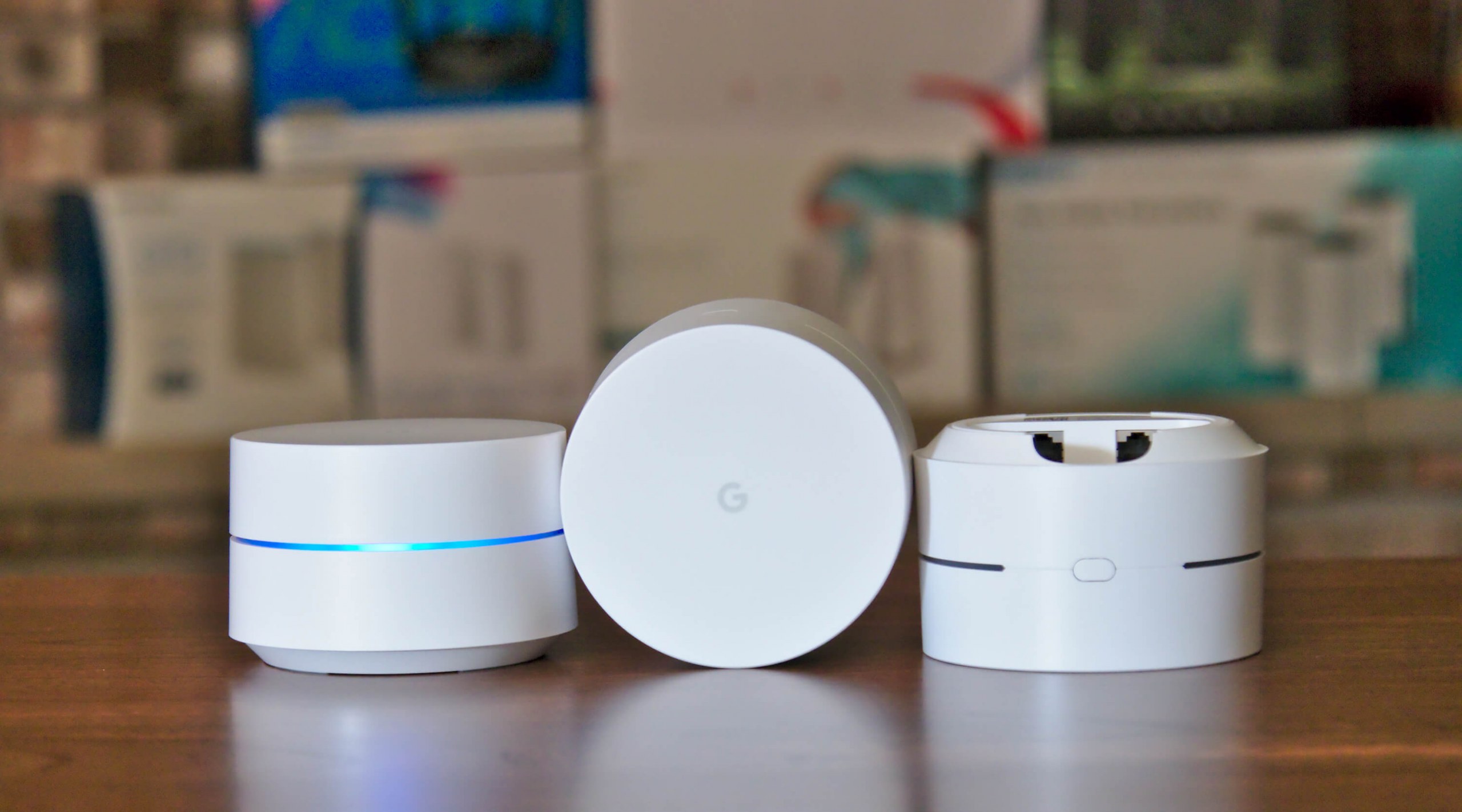
Google's offering is perhaps the most well known thanks to their marketing efforts and brand recognition. Coming in at $240 for a 3 node set, it's on the cheaper end of the products we are testing here. The nodes are symmetrical with 2 Ethernet ports and a USB-C power connection on the underside. The rest of the design is elegant, resembling two white hockey pucks stacked on top of each other. The only accent is an RGB led ring around the middle that displays the status of the node and network.
In typical Google fashion, the setup process and user experience are excellent. The network was easy to setup and I had it running within 10 minutes. The app hides most of the advanced features and gives a straightforward interface for managing the network. Unlike most other systems, Google doesn't advertise the tech specs and speed of the devices as heavily. It's clear that they are pushing the user experience and the whole Google ecosystem rather than raw performance.
Given Google's business model with regards to user data and privacy, this is a big concern for those considering the system. Google is clear in their privacy policy that they don't track the websites you visit. They do, however, collect metadata about your network. This includes things like data usage, network status, system settings, device types, and some more. You can turn this data collection off, but then most of the advanced functionality of the network gets disabled as well.
Overall, I found the Google system to be acceptable and affordable, but lacking any standout features.
Netgear Orbi
Netgear's Orbi line is the last system to round out this review. They are the biggest units by far so you'll want to be sure you have enough space to accommodate them. I have a 2 unit system which includes the RBR20 Router and RBS50 satellite. One unique feature of the Orbi system is the addition of a cable modem and router combo. This can help save you lots of money if your internet package includes a monthly equipment fee for your ISP's modem. Netgear also makes some smart speaker mesh nodes with Alexa built-in. For the more enterprise minded customers, Netgear also has a professional line of indoor and outdoor access points.
The mobile app was a bit disappointing. You can view network status and change some basic features, but it's not possible to configure much beyond the name and password. You'll have to go through the – admittedly very good – web interface for that. One thing I disliked about the mobile app and web interface was the amount of upselling that Netgear tries to do. There's popups and Netgear ads everywhere trying to get you to buy more nodes or security features. None of the other systems have this and it was a bit annoying to see ads trying to get me to buy a system I already own. You can turn the popups off, but I still felt it was unnecessary how much of the user interface was dedicated to this.
Once you set up the system, you'll hardly ever need to go to the user interface, so these issues aren't that impactful overall. In terms if features, the Orbi has just about everything. Parental control, add-on security monitoring through Bitdefender, remote management, mobile status alerts, VPN, and more. The Orbi has a dedicated 5GHz backhaul so like the Covr system, user devices have the equivalent of an AC1200 system. Tri-band systems are preferable to dual-band systems because one 5GHz band can be dedicated to backhaul between nodes. This leaves more bandwidth for client devices. Of course, if a client is connected to a satellite, it can only achieve speeds as fast as the backhaul.
In addition to the mesh systems we threw in a traditional enthusiast-level router for reference to how a non-mesh network would perform in the same scenarios. It made our list of Best Routers this year so it's no slouch.
The Netgear Nighthawk X4S is an AC2600 standalone router making it the fastest single device in our test. We used this $200 mid-range unit for reference, but the purpose was not to review it so we won't go into much detail besides the fact that it's a solid router. No matter how fancy your router is, there are strict rules from the FCC about how powerful the antennas can be. For large houses with a dense wall structure, there's nothing you can do to increase the range besides adding more access points. This individual router costs a bit less than all of the mesh systems in our roundup, but paying more will only get you faster speeds in certain scenarios and with compatible devices.
Test Methodology and Benchmarks
We tested each system one at a time in an identical setting. The environment was a three-level house with a basement and two above-ground floors. For 3 node systems, two nodes were placed on opposite ends of the main floor and the third node was placed in between them on the second floor. For 2 node systems, nodes were only placed on the main floor and nothing was put on the second floor.
We conducted speed and signal strength tests at five locations. The first was in the same room as the main router, the second was midway between the first two mesh points, the third was in the basement, the fourth was outside near the second mesh point, and the last was upstairs near the third mesh point (if one existed). Below is a crude clipart drawing of the node locations (red) and the testing locations (blue). In addition to speed and signal strength, we also tested latency at positions one and four.
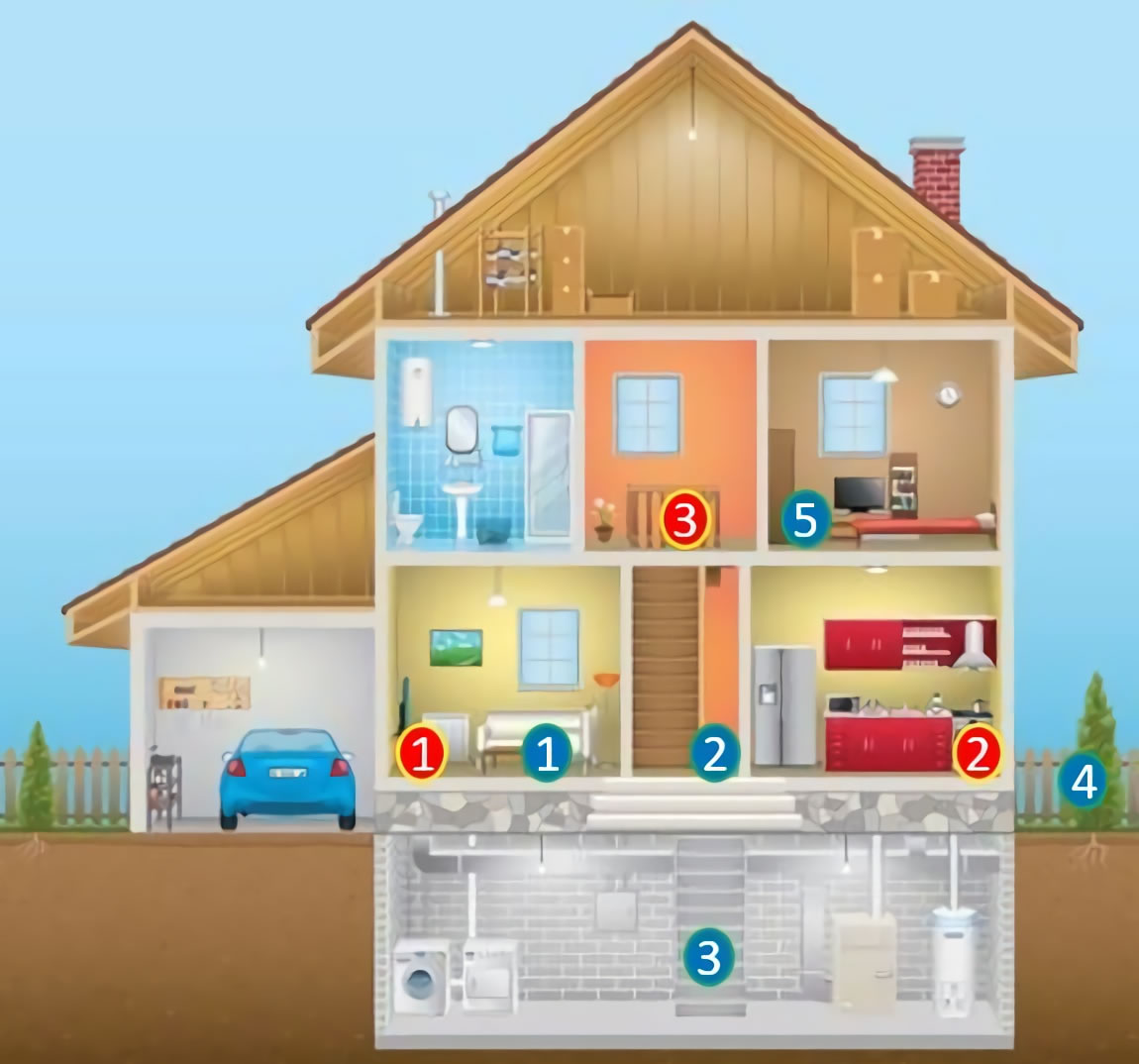
We used current generation mobile phones as clients for testing and iPerf 3.0 as the server. At each test location, we ran tests with a single client and then with three clients to simulate a more congested environment. Each speed test lasted 15 seconds and we averaged the results of three runs. The latency tests were much simpler since they were just an average of 30 pings.
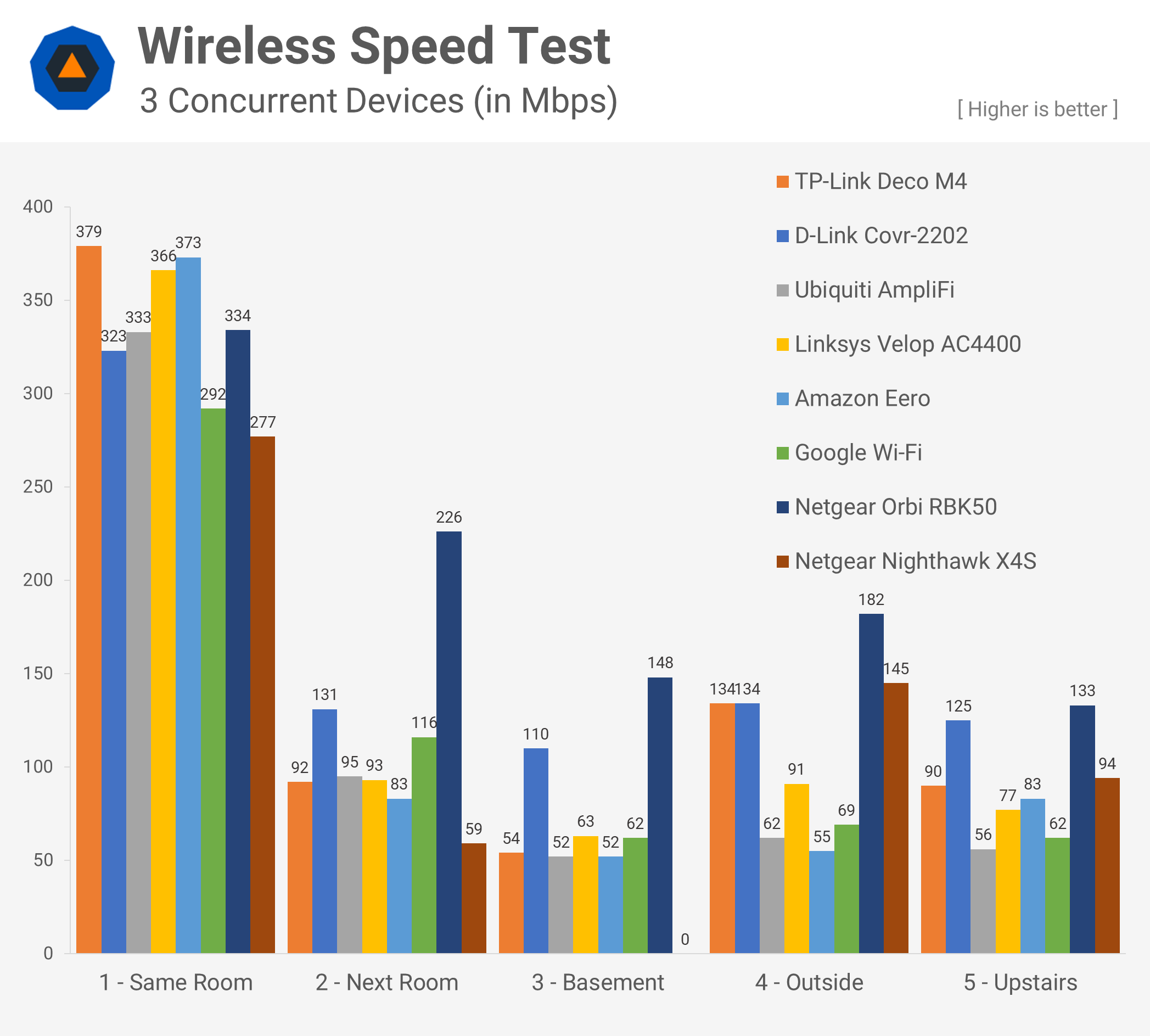
The first set of results represent a typical residence with three mobile devices all using Wi-Fi at the same time. This tests how well the system and nodes can handle multiple simultaneous connections.
Looking at the results, it's clear that Netgear's Orbi system is by far the fastest overall system on the market. It was twice as fast as most of the other devices at one room away and in the basement. The TP-Link Deco system had the fastest combined speed of 379Mbps across all three devices, but it quickly dropped off as the range increased. The second place finisher here was the D-Link Covr system. Surprisingly, those were both two-unit systems when the rest of the competition had three units. As you add more nodes, the range increases, but so do the control messages and routing across multiple nodes. The standalone Nighthawk router couldn't even sustain three connections in the basement location. This shows the benefits of a mesh system's range.
Beyond that, I would give third place to the TP-Link Deco system. Fourth and fifth places are pretty much tied between the Velop and Eero, and last were the Google Wi-Fi and Ubiquiti AmpliFi. We expected the Eero and Google systems to not perform as well since they are marketed to a broader audience, not just performance enthusiasts. We were, however, disappointed in the AmpliFi system from Ubiquiti. We had high hopes given their expertise in enterprise networking, but the results were a letdown.
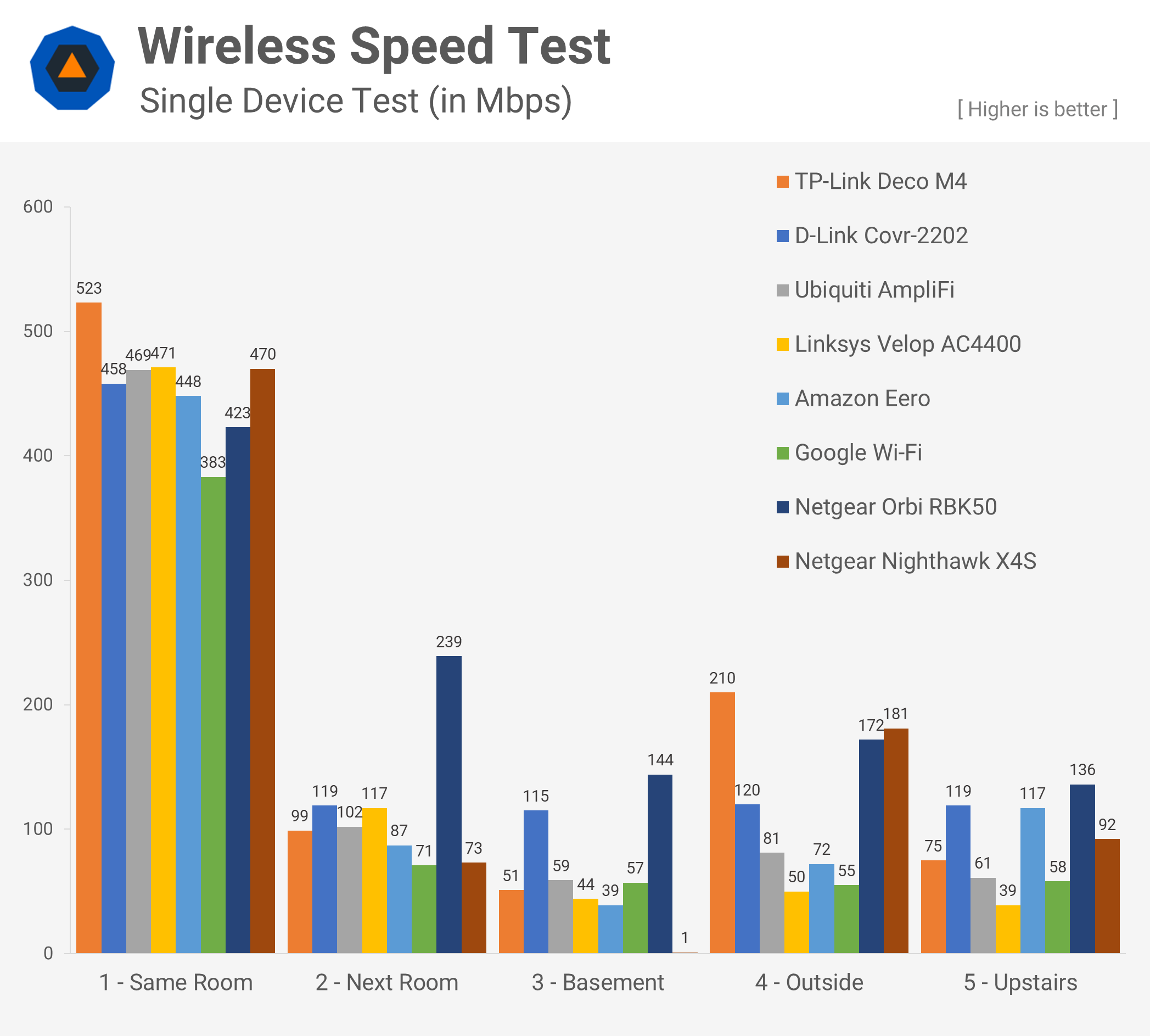
Moving on to the results for the single device tests, we get a similar story. These results were higher than the three device tests given the lower channel contention and resource utilization for maintaining separate connections. The Orbi system was still the fastest overall, but the margins have narrowed. The Deco and Covr systems trade blows as the next best systems. When it gives a strong enough signal, the standalone Nighthawk router also performs well.
This proves the point that for smaller locations, it's often better to just stick with a single, centrally-located standalone router than going with a mesh system. It only managed a measly 1Mbps to the basement test location though.
The AmpliFi system did better here than in the previous test. Google's system was still the slowest though. Finally, we have the Velop and Eero systems in the middle of the pack again.
The signal strength tests are interesting to look at but given the speed results, don't tell the whole story. Keep in mind that the units are dBm so a higher value (closest to zero) is better. For reference, a jump of 3dBm indicates a signal that is twice as powerful. Test position 1 and 4 were both very close to the nodes so we can really see that the Orbi system blasts.
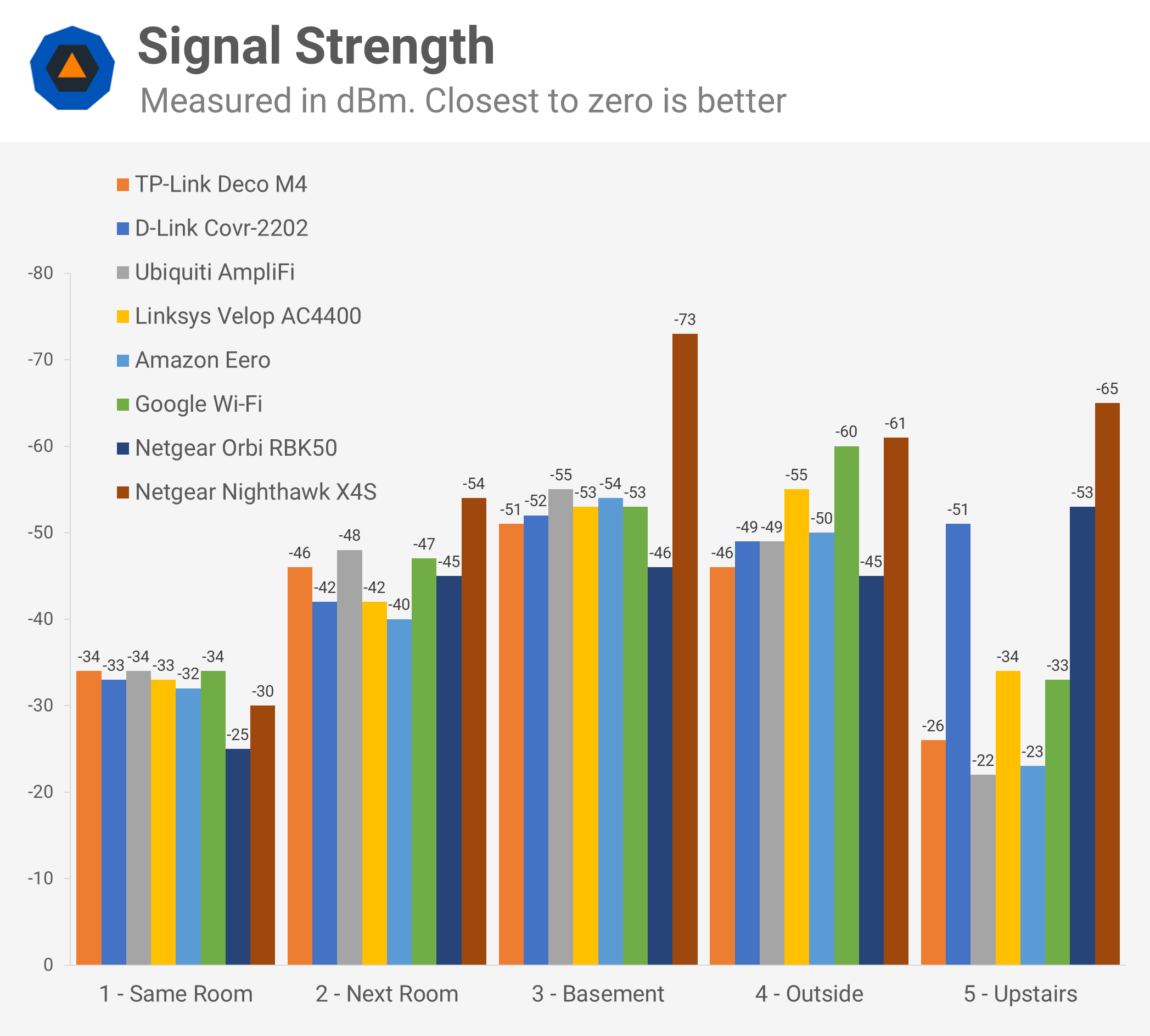
As expected, the standalone Nighthawk had better than average signal strength in the same room, but it quickly drops off such that in the basement, it's almost useless. Looking at the upstairs results for the Covr and Orbi, we can see the results of having only two mesh points. However, they had the fastest speed results at this location which is a testament to their encoding and signal quality. Even with a weaker signal, they are still able to provide faster speeds than the competition. It's hard to rank the rest of the systems since the results are close.
One additional thing we can see from these results is the impact that physical node size has on signal strength. The Orbi was by far the biggest and it had the best signal strength. The eero and Google nodes were the smallest and had the worst signal strength. This is a pretty obvious conclusion, but there will always be this tradeoff. You can get a small unit that's easy to hide, or a big unit that sticks out, but performs well.
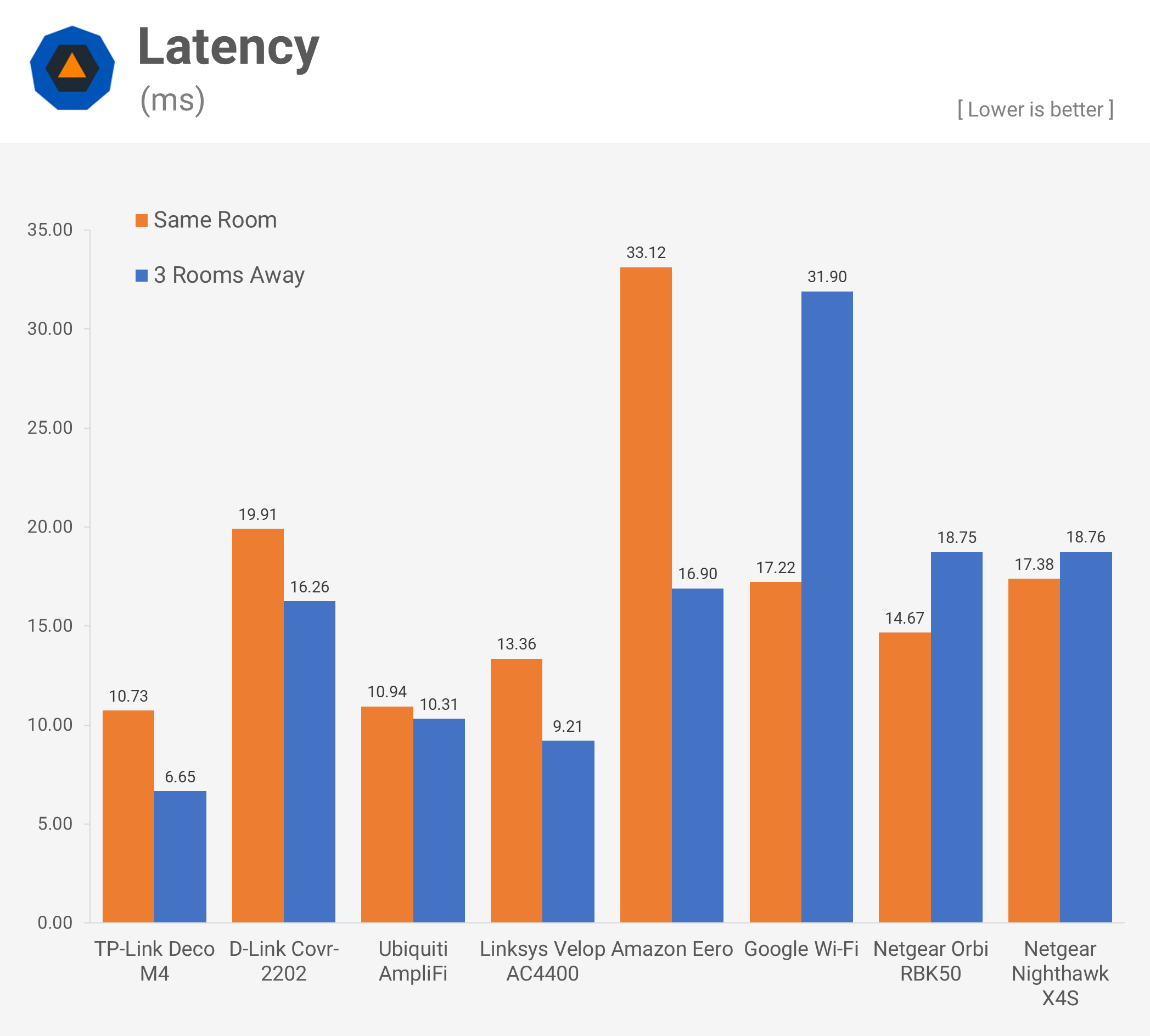
The last test we have is latency. We see a bit of a different story here compared to the speed tests. In these results, the Deco is the winner with the AmpliFi in second place. The Velop comes in third followed by the Orbi, Nighthawk, and Covr respectively. The Eero and Google systems were much slower than the rest. A few milliseconds here and there between systems don't mean anything in terms of real world performance. Besides the Google and Amazon systems, you would hardly notice a difference between any of the systems. If you do care about those few milliseconds, you should just invest in a wired network because Wi-Fi is always going to be slower.
Closing Remarks
Let's circle back to price of each system so we can draw some conclusions. To be clear, none of these systems were bad. We got great coverage around the whole house with all of them. The setup and installation process was a bit different for each one, but always straightforward.
Once they are setup, you don't really have to think about Wi-Fi anymore. For many households, that may come as the biggest win down the road as the systems are more autonomous than your average standard router, easier to secure and manage, and are meant to do away with dead spots in your house.
If you don't mind the larger units, the clear winner in our roundup is the Netgear Orbi. If you want fast and dependable Wi-Fi and have $330 to spend, go for it.
The TP-Link Deco M4 system was the cheapest of the bunch but still performed relatively well. If you don't need the absolute fastest system, you can get it for almost half the price as the Orbi, making it the obvious value pick. We think the Deco works out great for a less tech-savvy relative that doesn't want to worry about Wi-Fi anymore.
Between those two, spending $255 gets you the D-Link Covr system which we think is a better value than the Orbi. The only downside is the limited expandability outside of just buying two separate systems and connecting them together.
The AmpliFi, Velop, and Eero systems were more expensive. They worked well but we don't see any differentiation to favor them on top of the above systems. The Google system was the second cheapest in the roundup, and we've praised it before for its accessibility and ease of use. however it's now showing its age with better competition around, we can't overlook that it was the slowest mesh system we tested. There are rumors Google will follow up with something faster in the coming months.
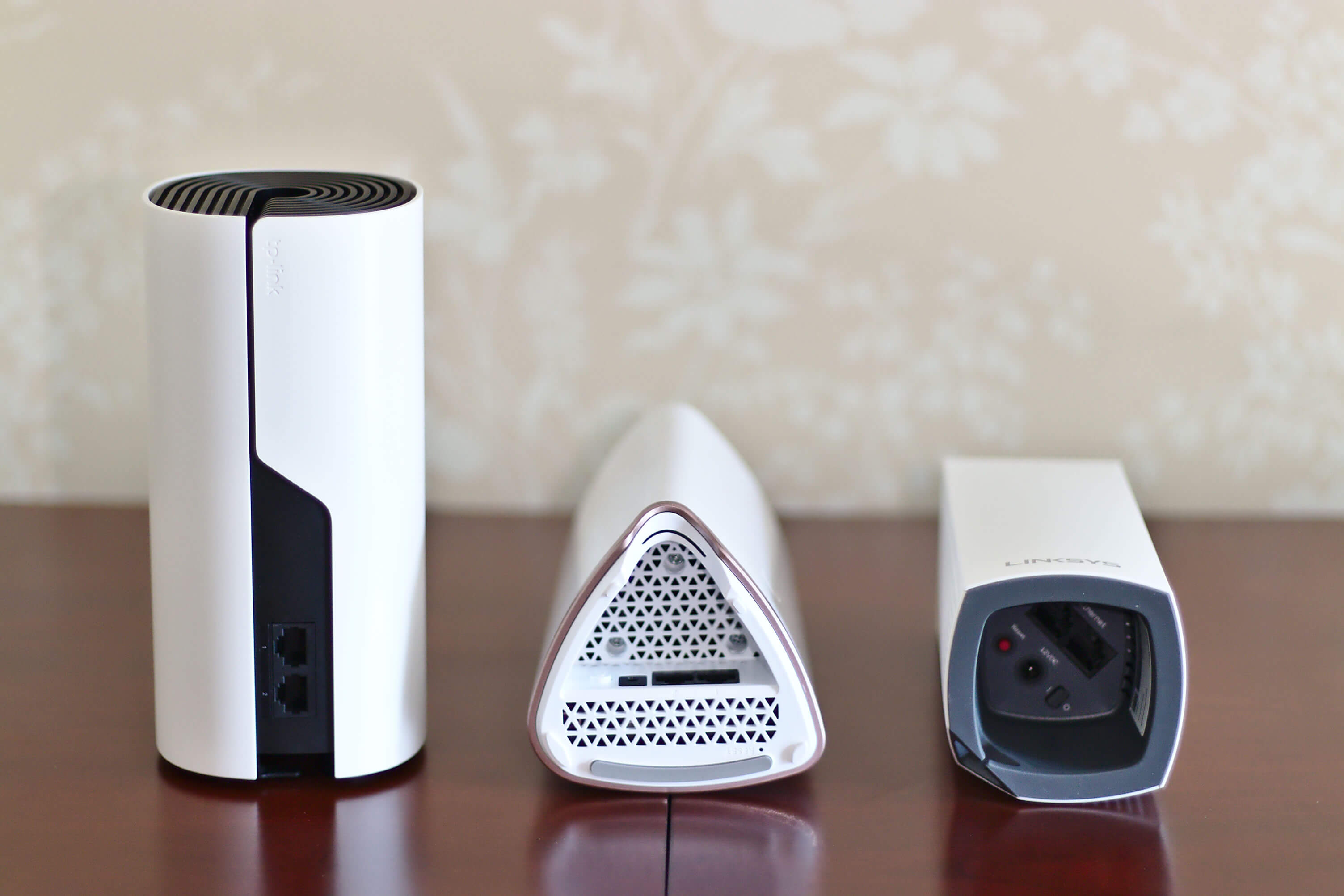
If you're trying to decide how many mesh points to buy, here's a rough recommendation. For an apartment or small house, get two. For a mid sized house around 3,000 square feet, get three or stay at two if using the Orbi system. If you have a larger house around 4,000 square feet, we would say buy the standard system, and pick up an additional mesh point or two depending on your house's distribution. For larger houses, the optimal solution is to run Ethernet cables and connect some units as hybrid wired access points. All systems in this roundup except for the Eero and AmpliFi support this option.
To wrap things up, our recommendations are as follows. For a budget system, go with the TP-Link Deco M4. For the fastest system or if you can get it on sale, go for the Netgear Orbi. Anywhere else in the middle, check out the D-Link Covr-2202.
Shopping Shortcuts:
- Netgear Orbi on B&H Photo Video, Amazon
- TP-Link Deco M4 on B&H Photo Video, Amazon
- D-Link Covr-2202 on B&H Photo Video, Amazon
- Ubiquiti AmpliFi on B&H Photo Video, Amazon
- Linksys Velop on B&H Photo Video, Amazon
- Amazon Eero on B&H Photo Video, Amazon
- Google Wi-Fi on B&H Photo Video, Amazon

